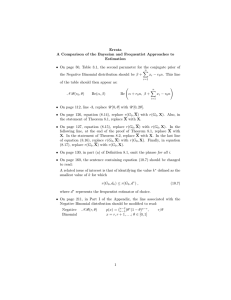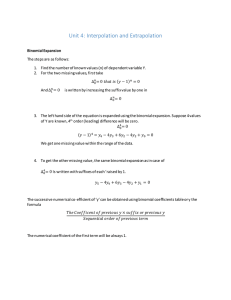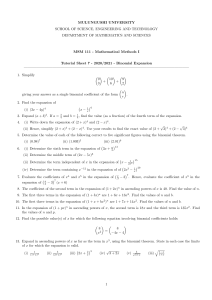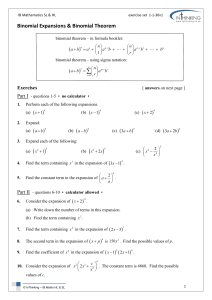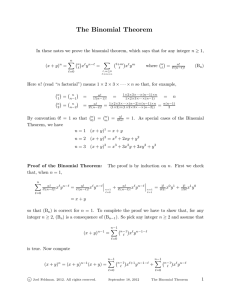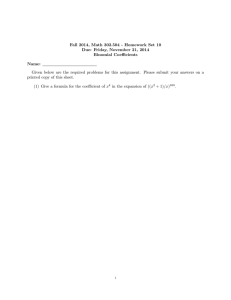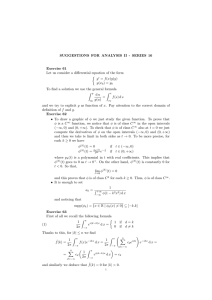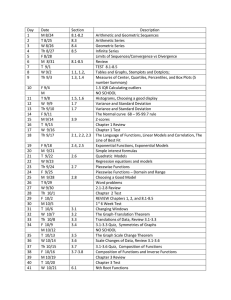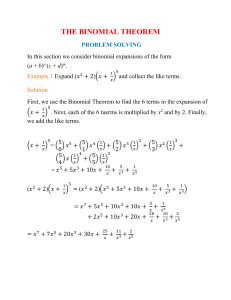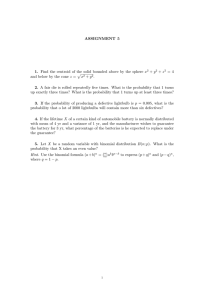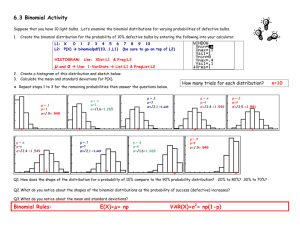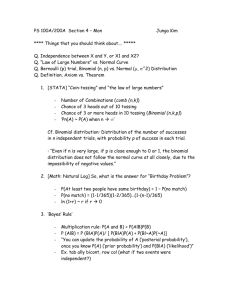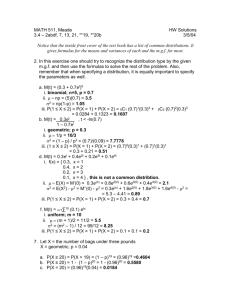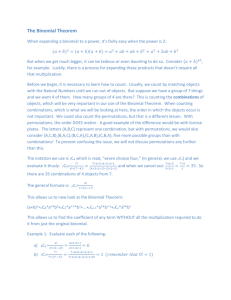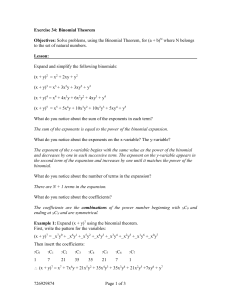Extending the Binomial Theorem for fractional powers
advertisement
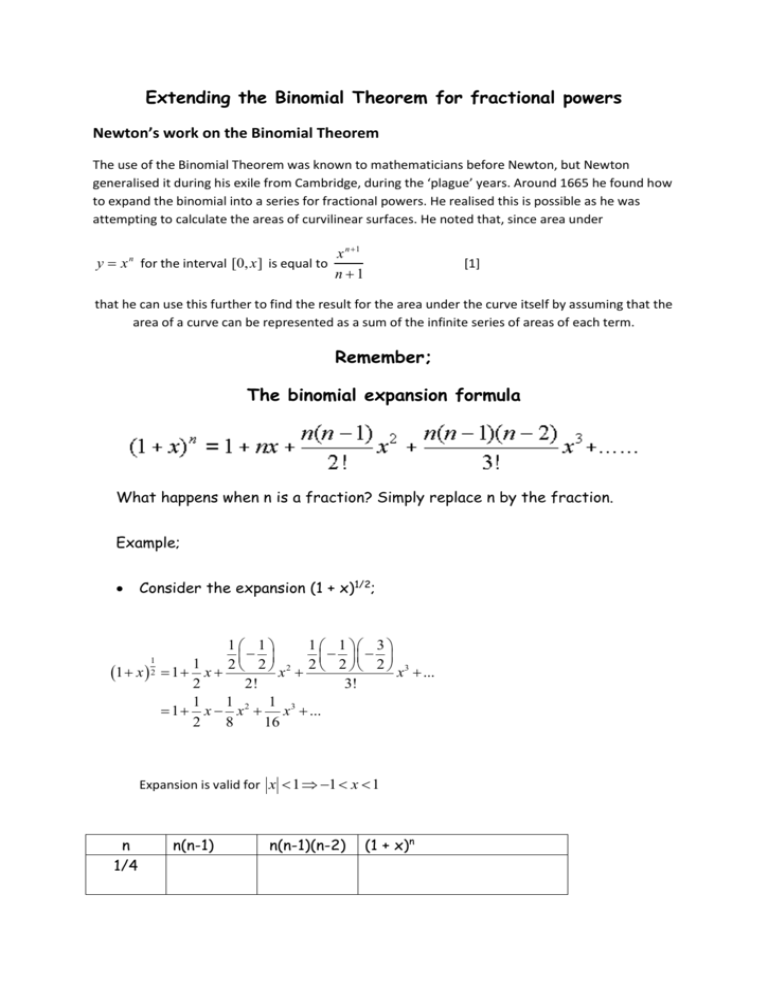
Extending the Binomial Theorem for fractional powers Newton’s work on the Binomial Theorem The use of the Binomial Theorem was known to mathematicians before Newton, but Newton generalised it during his exile from Cambridge, during the ‘plague’ years. Around 1665 he found how to expand the binomial into a series for fractional powers. He realised this is possible as he was attempting to calculate the areas of curvilinear surfaces. He noted that, since area under y x n for the interval [0, x] is equal to x n1 n 1 [1] that he can use this further to find the result for the area under the curve itself by assuming that the area of a curve can be represented as a sum of the infinite series of areas of each term. Remember; The binomial expansion formula What happens when n is a fraction? Simply replace n by the fraction. Example; Consider the expansion (1 + x)1/2; 1 x 1 2 1 1 1 1 3 1 2 2 2 2 2 2 3 1 x x x ... 2 2! 3! 1 1 1 1 x x 2 x3 ... 2 8 16 Expansion is valid for x 1 1 x 1 n 1/4 n(n-1) n(n-1)(n-2) (1 + x)n -1/2 3/5 Challenge; Can you do this? Find an approximation for 1/√1+x
